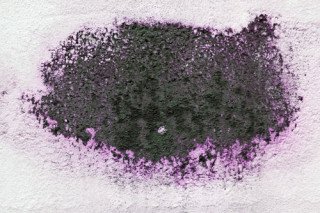Purple Mold: What It Is, How to Identify It, and What to Do About It
Expert insight by: Brad Fishbein, Licensed Mold Assessor
Updated April 7, 2025
Can mold really be purple?
You bet it can. And if you’ve spotted purple fuzz or stains inside your home, you need to take it seriously.
Mold comes in all shades—black, white, green, orange—but purple mold? It’s one of the more mysterious types you might encounter. While rare, it’s not unheard of—and what’s even more important is what it could be hiding behind the walls.
In this guide, you’ll learn everything you need to know from a licensed mold assessor’s perspective.
🟣 What Is Purple Mold?
Let’s clear one thing up first:
There’s no such thing as a species called “purple mold.” The term refers to mold that appears purple in color. It could be a blend of black, blue, or even red mold species, creating a purplish hue under certain lighting or on certain materials.
You’ll typically find it in:
- Moist environments with low airflow
- Behind vinyl wallpaper
- On bathroom drywall or wood
- Around windows or HVAC closets
“Mold grows where there is moisture. It often looks like spots and can be many different colors.”
— Centers for Disease Control and Prevention (CDC)
Source

⚠️ Is Purple Mold Dangerous?
Here’s the deal:
Purple mold might look funky, but it could be just as harmful as any other color. In some cases, it’s actually a mix of molds, including toxic types like Stachybotrys chartarum (commonly referred to as toxic black mold).
When I see purple mold on an inspection, I treat it with caution every time. Why?
- It can release mycotoxins — toxic compounds produced by certain molds
- It might indicate hidden water damage behind the surface
- It could trigger allergies, asthma, or sinus issues
“Exposure to damp and moldy environments may cause a variety of health effects, or none at all. Some people are sensitive to molds.”
— U.S. Environmental Protection Agency (EPA)
Source
📍 Where Is Purple Mold Most Common?
| Area | Why It Grows There |
|---|---|
| Bathroom walls | High humidity, especially behind wallpaper |
| Behind vinyl wallpaper | Moisture gets trapped, little airflow |
| Around HVAC closets | Condensation and poor ventilation |
| Wood trim or paneling | Porous and organic material retains moisture |
Sometimes the purple you’re seeing is surface-level staining. But other times, it’s a red flag that something more serious is lurking inside the wall.
🧽 How to Remove Purple Mold
👣 Step 1: Determine Depth
Ask yourself:
Is the mold only on the surface, or is it embedded in drywall or wood?
-
Surface mold on vinyl or tile:
You can often clean it safely with a biodegradable cleaner and a soft scrub brush. -
Embedded mold in drywall or porous materials:
This requires professional mold remediation.
💡 EPA Recommendation:
“If the moldy area is larger than 10 square feet, consult the EPA guide and consider hiring a professional.”
Source
🛠️ DIY Cleaning Tips for Small Surface Mold
| Tool Needed | Why It's Important |
|---|---|
| Biodegradable mold cleaner | Kills surface spores safely |
| N95 Mask | Protects from spore inhalation |
| Rubber gloves & goggles | Prevents skin and eye contact |
| HEPA vacuum (optional) | Removes any airborne spores |
Avoid bleach — it’s not as effective on porous surfaces and can actually worsen indoor air quality.
Read more: Does Bleach Kill Mold?
📞 When to Call a Mold Remediation Pro
If any of the following are true, don’t DIY:
- The affected area is larger than 10 sq ft
- The mold keeps coming back
- There’s musty odor but no visible mold
- You or someone in the home has asthma or respiratory issues
You can find guidance here: Complete Mold Remediation Protocol
🧠 Final Thoughts from Brad
Here’s the bottom line: Color doesn’t tell the full story.
Just because it’s purple doesn’t mean it’s harmless. In fact, it could be toxic black mold in disguise — or worse, it could signal a hidden water intrusion problem that hasn’t been addressed yet.
As a licensed mold assessor, I treat every unusual mold color as a potential problem until proven otherwise. If you’re not sure what you’re looking at, don’t guess — get it tested or inspected by a professional.
❓ Frequently Asked Questions
What is purple mold?
Purple mold refers to mold that appears purple due to pigment combinations (black, blue, or red). It is not a species on its own but can still be dangerous.
Is purple mold toxic?
Potentially. Purple mold may contain mycotoxin-producing species and should be treated as if it’s hazardous until tested.
Where does purple mold usually grow?
It grows in moist, poorly ventilated areas such as behind wallpaper, on bathroom drywall, or in HVAC closets.
How do I remove purple mold?
If it's on the surface, you can clean it using non-toxic mold cleaners. If it's deeper or widespread, hire a licensed mold remediation company.
Explore Related Topics:

Meet the author: Brad Fishbein is an ACAC council-certified Microbial Investigator. In the fall of 2012, he became a Licensed Mold Assessor in the State of Florida through the Department of Business & Professional Regulation. Brad has helped homeowners with over 5,000 successfully completed Mold Inspections since 2009.

